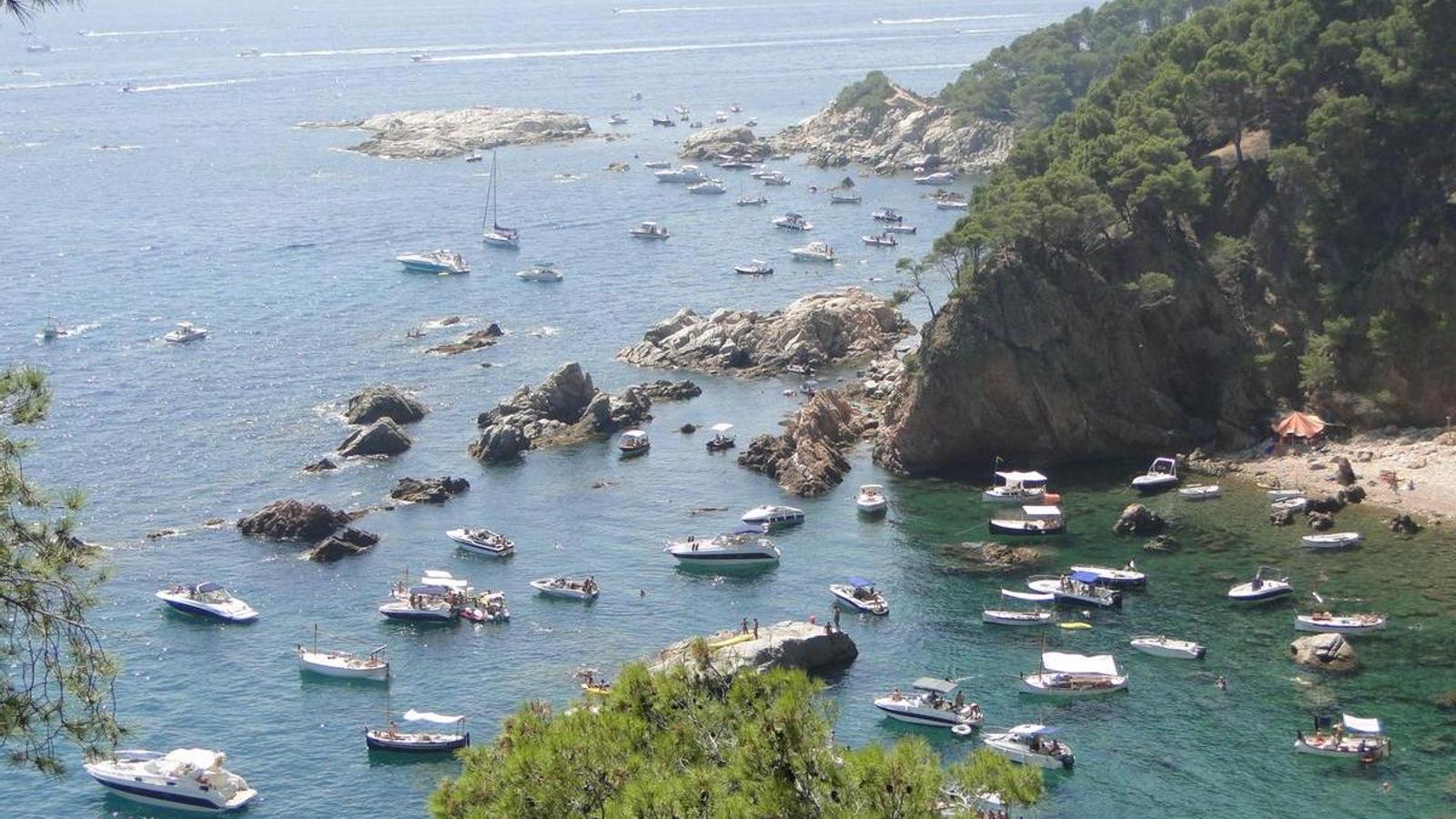Boats and swimmers: Is there more chaos than ever on the Costa Brava?
The Government has activated two environmental observers in the Baix Empordà region to monitor the proliferation of boats and raise awareness about good practices.


GironaSummer after summer, the Costa Brava is filled with recreational boats dropping anchor in coves and idyllic spots. This happens especially along the Baix Empordà coast, between Palamós and Begur, where many ports and buoy fields are concentrated, with hundreds of boats moored in the months of July and August, setting sail every day. However, this also happens further up the Gulf of Roses, towards Cap de Creus, where the landscape is more rugged and wild. In all these places, lines of yellow buoys mark the limit that boats cannot cross—when there are no buoys, boats theoretically cannot approach within 50 meters of the rocks. However, once again this year, environmentalists denounce that these measures are often not followed and that the proliferation of motorboats, yachts, zodiac boats, and jet skis spoils the environment and endangers bathers who reach the coves on foot.
"Never before has a summer seen so much chaos and so many people. There are crowds in every corner. The feeling of overcrowding is evident and, sadly, the situation has worsened. People who go kayaking or want to swim find boats rushing by all day long. It's ridiculous and dangerous" Brava.
Aware of this significant increase in the number of recreational boats, especially after the pandemic, the Generalitat has launched a pilot system of environmental informants in the Natura 2000 Litoral del Baix Empordà marine protected area during the months of July and August. They are two professionals who transmit the information, by voice and in situ, to boat users off the coast of Palamós, Montras, Palafrugell, and Begur.
The informants also provide recommendations on good anchoring practices, explain municipal and Generalitat actions to improve space management, and conduct surveys of beach and boat users to gather information on habits, perceptions, and coexistence issues. In Alt Empordà, along the entire coastline of Cape Crues, this pioneering measure is not applied because, being a natural park, it already has its own own rules and navigation controls to avoid uncivil behavior.
"It's a positive and necessary measure that has yielded results. Informers play a key role in raising awareness among citizens who are unaware of the rules of conduct for preserving the environment. They also have a sanctioning role, as they are coordinated with security forces regarding the percentage of visitors who, despite knowing the rules, ignore them," he explained to the Generalitat.
Regarding this figure, which is also present in many other natural sites in Catalonia, Vilhaur adds: "They are a tool that allows us to respond to a country that tends to become a world leader in tourism, as well as to its 10 million inhabitants. Management and access to the natural environment must be guaranteed and controlled."
On the Costa Brava, these informants have been promoted by the Baix Empordà Coastal Maritime Co-Management Board, an organization that unites administrations, entities, and scientists with the aim of making the ecological sustainability of the environment compatible with the economic activities of the territory.
The Mont-ras coves, a source of conflict
One of the triggers for this measure has been the event, for the third time in two years, of sabotage on the buoys in the Vedell and Crit coves, in the municipality of Mont-ras, one of the critical points for this proliferation of boats. The City Council of this small municipality in the Baix Empordà region allocated a significant portion of its budget to marking the area at the beginning of the summer, but only two days later the buoys had already been vandalized and removed by boat owners who wanted to anchor very close to the rocks.
Faced with this situation, SOS Costa Brava, which considers the informants' measures insufficient, is calling for greater collaboration from supra-municipal administrations to eradicate the problem. "The buoys should not be financed by a city council that does not receive income from nautical tourism; rather, common management and monitoring is necessary for the entire Baix Empordà region, within the Co-Management Committee," argues Jordi Cruz, who adds: "We are asking for a law regulating anchoring and a mapping of the phanerogams to clearly establish the problem."
To denounce this situation, a week ago the environmental federation organized a symbolic event, creating a barrier with ropes, kayaks, and swimmers for a few hours to block the entry of boats into Vedell cove.
Consequences on the marine ecosystem
Beyond safety, visual impact, and the loss of tranquility for swimmers, the concentration of boats also has a direct effect on the biodiversity of the marine ecosystem. "Anchoring on the seabed is a proven effect, but the noise of boats can also cause fish to change their behavior. In the Medes, we see that in summer, with so many people, species like grouper disappear. Or when potatoes or olives are thrown from boats in its gold, Barcelona.
Beyond anchoring, the expert laments that the infrastructure of the buoy fields can also harm the ecosystem. "If they are not installed correctly, the chains damage the seabed and the posidonia meadows, and leave the rocks bare for one or two meters around them," he explains.
Similarly, the fuel that runs the boats and is dumped into the sea is also dangerous. Hereu emphasizes that these hydrocarbons remain floating, do not degrade, and reach the rocks and mid-coastal communities, the border between the sea and the coast, which are fragile and are greatly affected. "Seabirds that dive can also see their behavior altered." its natural ability to insulate itself, because the wax on the feathers is impregnated," he concludes.
